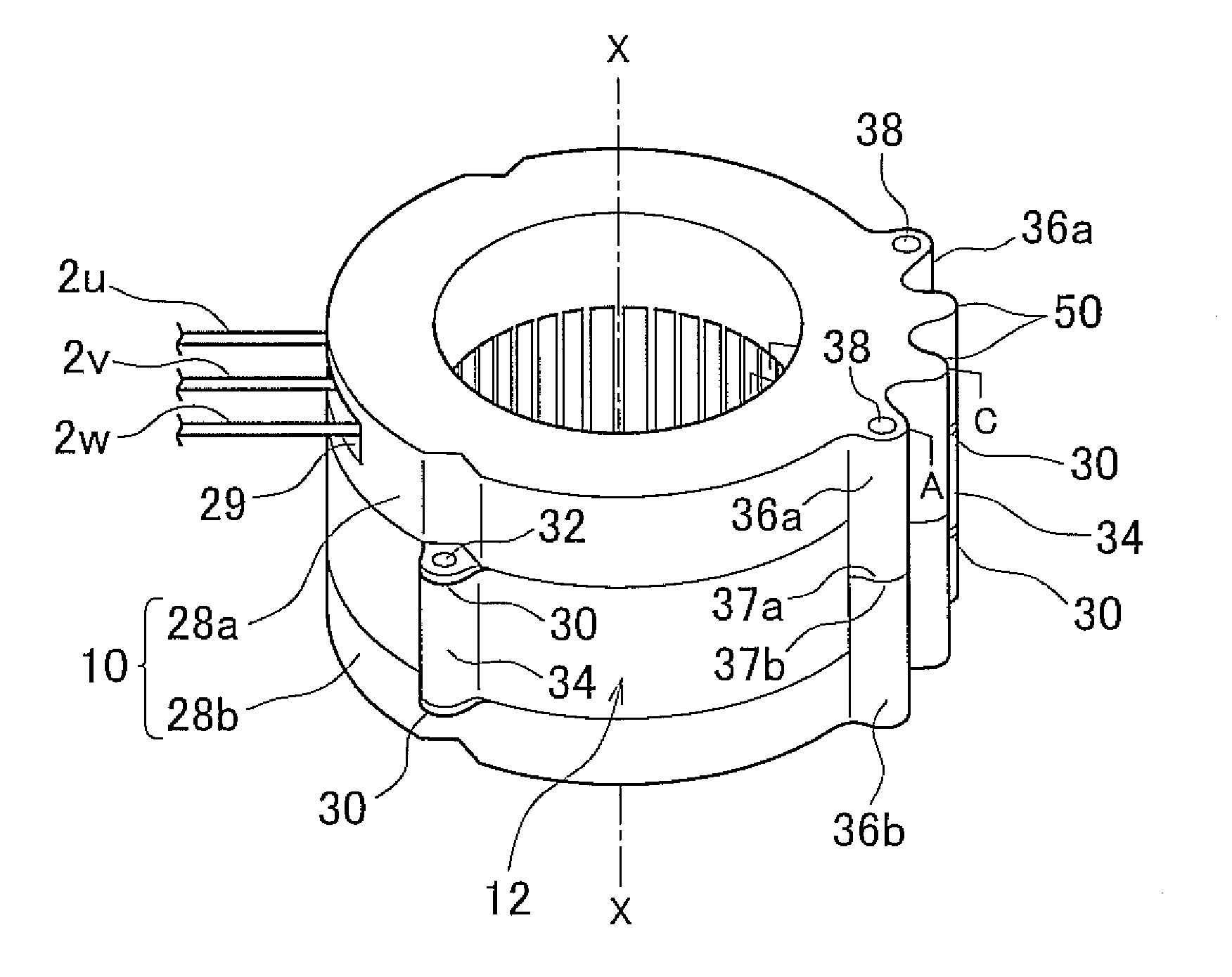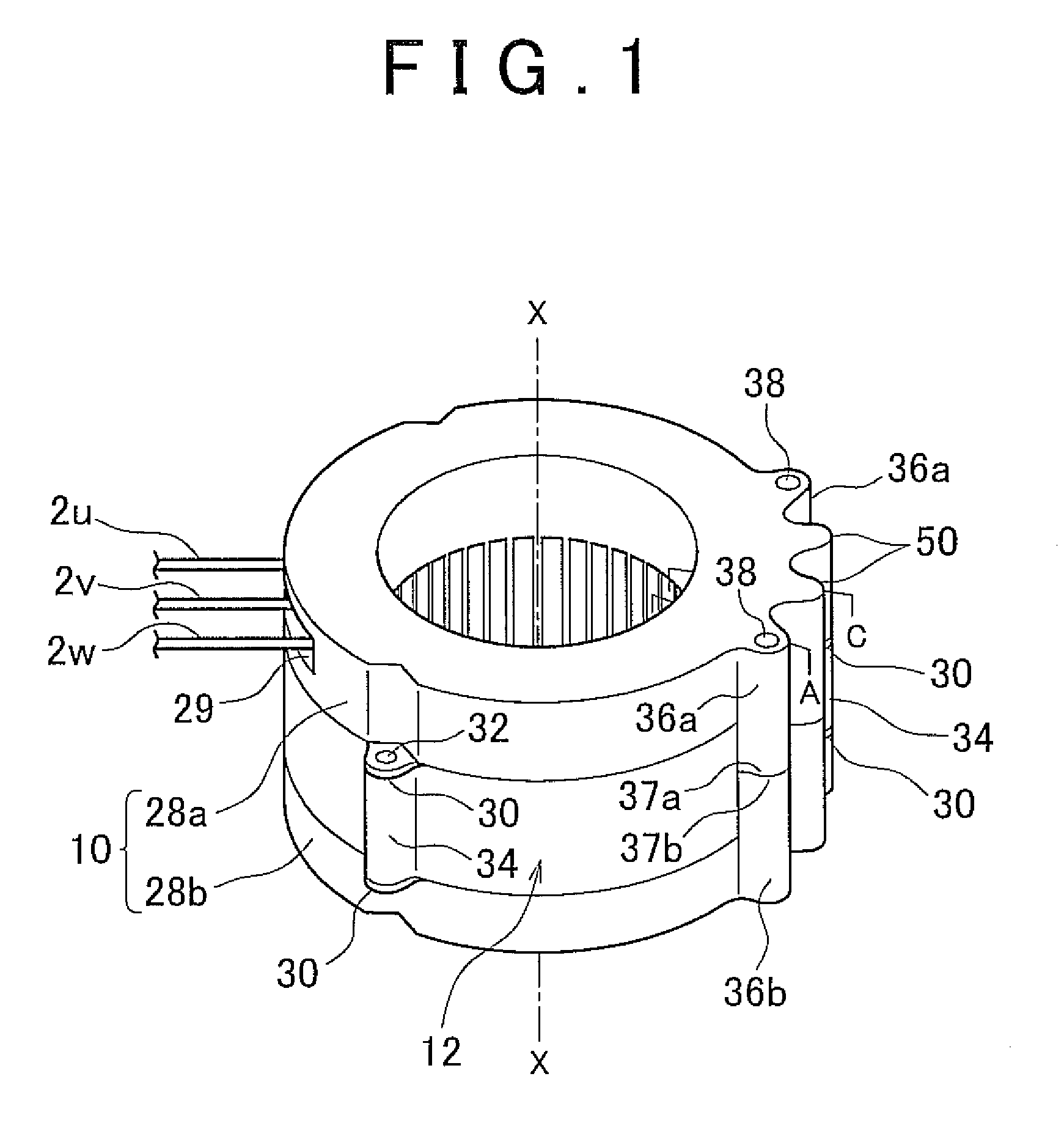Cooling structure for rotary electric machine
a technology of rotary electric machines and cooling structures, which is applied in the direction of dynamo-electric machines, support/enclosement/cases, and magnetic circuit shapes/forms/constructions, etc., can solve the problems of difficult pipe connection, inability to obtain cooling performance and thus insulating performance, and uneven pressure and amount of cooling oil supplied to the oil chambers, so as to improve the assemblability and mountability of the rotary electric machine
- Summary
- Abstract
- Description
- Claims
- Application Information
AI Technical Summary
Benefits of technology
Problems solved by technology
Method used
Image
Examples
Embodiment Construction
[0045]Hereinafter, example embodiments of the invention will be described in detail with reference to the accompanying drawings. In the description, the specific shapes, materials, numeric values, and directions and the like are merely examples to facilitate understanding of the invention, and may be changed as appropriate according to the use, objective, and specifications and the like.
[0046]In the description below, coolant used with the cooling structure for a rotary electric machine according to this example embodiment is described as being cooling oil, but the coolant of the cooling structure of this invention is not limited to this. For example, other coolant such as LLC may be used.
[0047]A first example embodiment of the invention will now be described. FIG. 1 is a perspective view of a cooling structure 10 for a rotary electric machine according to this example embodiment that is mounted to a stator 12 for the rotary electric machine. FIG. 2 is a sectional view taken along l...
PUM
 Login to View More
Login to View More Abstract
Description
Claims
Application Information
 Login to View More
Login to View More - R&D
- Intellectual Property
- Life Sciences
- Materials
- Tech Scout
- Unparalleled Data Quality
- Higher Quality Content
- 60% Fewer Hallucinations
Browse by: Latest US Patents, China's latest patents, Technical Efficacy Thesaurus, Application Domain, Technology Topic, Popular Technical Reports.
© 2025 PatSnap. All rights reserved.Legal|Privacy policy|Modern Slavery Act Transparency Statement|Sitemap|About US| Contact US: help@patsnap.com



